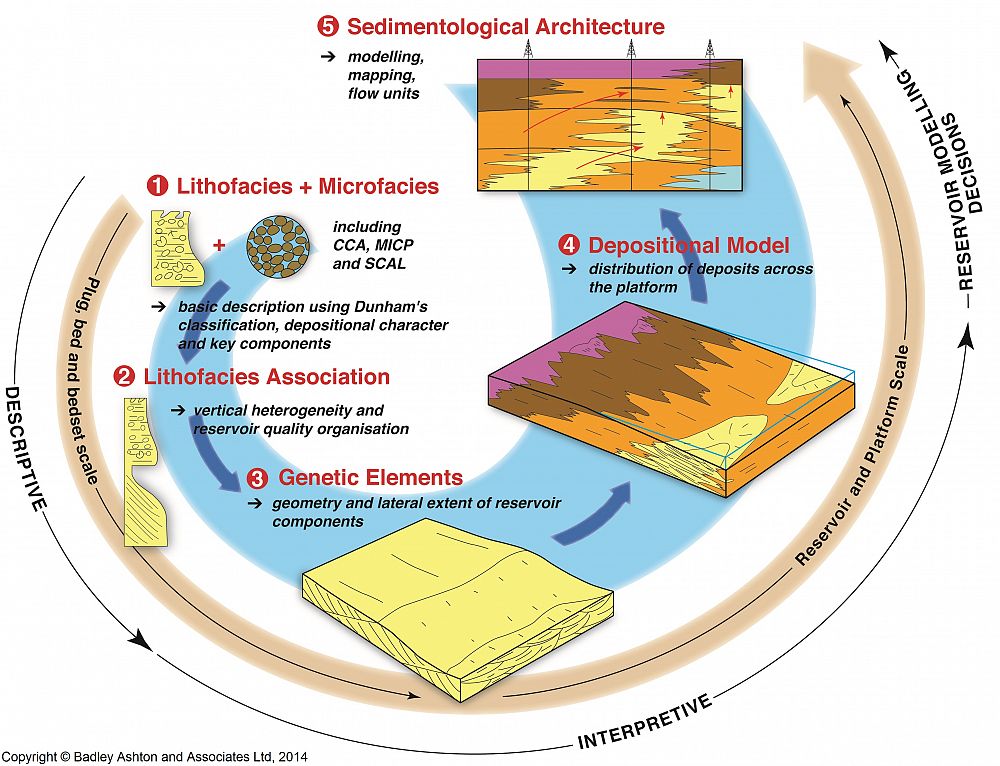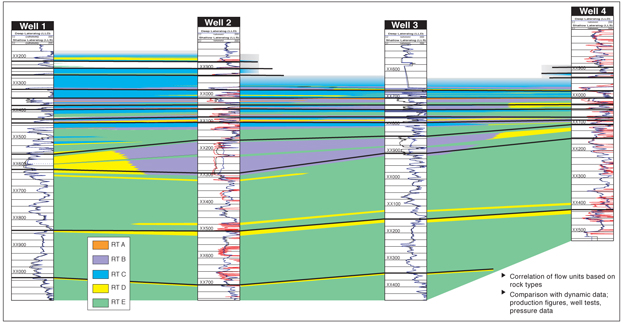Description of carbonate cores is undertaken at a detailed 1:50 or 1:20 scale and includes a graphical illustration to reflect the core in terms of its lithological characteristics (eg. texture, cementation, porosity). Physical sedimentary structures and other features (eg. cross bedding or lamination) and bioturbation are recorded (this can include burrow intensity/diversity). Other features recorded during core description include cements (type, intensity and distribution), hydrocarbon staining, texture, porosity (types and abundance) and the distribution of fractures. Key surfaces are also identified and recorded (eg. erosive/flooding surfaces). Core description sheets are electronically composed by Badley Ashton’s in-house draughting team, Badley Ashton Geographics. A number of parameters can also be extracted from the core description sheets and digitised/tabulated (eg. texture, hydrocarbon stain, cements, etc) for upload into various software packages (eg. Terrastation, Petrel). The observations made during core description are used to interpret the depositional processes (eg. carbonate production, oolite shoal migration, reef build ups, etc) and ultimately the environment(s) of deposition. Within carbonate reservoirs, core-based interpretations are confirmed and refined through the evaluation of microfacies in thin-sections.
Interpretative lithofacies association schemes are used to characterise intervals with unique sedimentological/lithological properties. Calibration of core and wireline logs provide a better understanding of log responses and resolution, and facilitate extrapolation of lithofacies associations into uncored intervals. The integrated core and log facies interpretations help to assess the stacking of the genetic units and the recognition of key surfaces enables the depositional evolution and hence the sequence stratigraphic framework to be resolved.


Comparison/correlation can be undertaken to highlight spatial and stratigraphic variations in the distribution of facies (reservoir and non-reservoir) and the position and character of key stratigraphic surfaces. Following correlation and full integration of all sedimentological, structural, petrographical and reservoir quality data, interpretation of reservoir architecture can be undertaken to highlight potential geobody geometries/scales, flow units, baffles/barriers and internal heterogeneities, with integrated petrographical analyses highlighting the controls on net reservoir.
